Ruben Salazar: The making of the myth
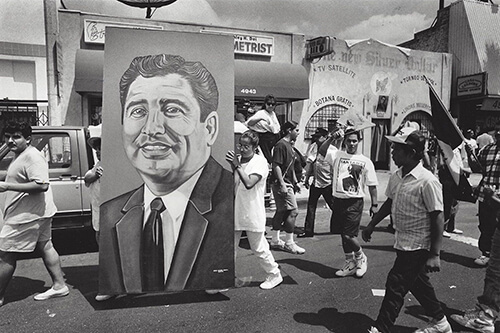
In death, he’s been made more radical than in life.
On Sept. 16, 1970, during a celebration of the 160th anniversary of Mexico’s independence from Spain, a group of young Chicanos lifted above their heads a massive, 70-pound plywood board of a smiling man in a suit and tie.
The marchers in East Los Angeles surrounded the painted image — clapping, cheering and chanting “Viva Ruben!” and “Ruben presente!” “Ruben” was the esteemed Mexican American journalist Ruben Salazar, who weeks earlier had been killed by an L.A. County Sheriff’s tear gas projectile while covering the Vietnam War protests known as the National Chicano Moratorium. His death on Aug. 29, 1970, was still an open wound.
It was “as if they were carrying an Inca god or Moctezuma,” says Salazar’s friend Alberto Juarez, who marched alongside the tens of thousands of other demonstrators on that hot September afternoon.
Sergio Hernandez was the artist behind the spray-painted Salazar portrait. He and other members of the Chicano group Con Safos carried the plywood panel for some 30 minutes before it started moving through the crowd. “Everybody wanted to march with it,” he recalls, “and it suddenly disappeared.”
The Times is taking a look back at the legacy of the Chicano Moratorium in 1970. See more stories
Years later the portrait was found in a storage shed in East Los Angeles College and is now on display at Cal State Channel Islands with Salazar firmly established as a beloved figure. But that September day in 1970 was the first time Juarez, then 28 years old, had seen his friend iconized. “Ruben,” he says, “became a battle cry.”
“It was a traumatic event,” Frank Cruz, a pioneering TV journalist at KABC and KNBC and co-creator of Telemundo, says of the killing of Salazar — on a day that also led to the deaths of two others, Angel Diaz and Lynn Ward.
In 1970, Cruz was chair and professor at Cal State Long Beach’s Chicano Studies department when he took to the streets to march with his students at the National Chicano Moratorium.
“You had all the activists and demonstrations on the streets, but of all the people who could’ve died that day, having Salazar pass away conjures up the question: Did somebody really want to wipe him out?” says Cruz, now 80. “It created sinister thoughts.”
It didn’t help that days before his slaying, Salazar, an L.A. Times reporter who rose through the ranks to become a columnist for the paper and news director of the Spanish-language TV news station KMEX, revealed to close confidants that he believed he was in danger; he suspected that he was being followed by police.
On the day of the march, he had a premonition that something would happen. “The last thing he said to me was, ‘Be careful.’... He kind of saw what was coming,” says Bob Navarro, a television reporter for KNXT (now KCBS), who was covering the march. Salazar gave his last televised interview on Navarro’s show, “The Siesta Is Over,” three months before his death.
On that show, Navarro asked Salazar whether he was becoming more of an advocate than an objective journalist with his columns. “I’m only advocating the Mexican American community ... which by the way,” Salazar told Navarro, “the general community has totally ignored.”
After his death, the Mexican American community — many of whom were suspicious of the Sheriff’s Department account of the killing — elevated Salazar to martyrdom, with a high school in Pico Rivera, an elementary school in Chicago, a library at Sonoma State, a building at Cal State L.A., an annual journalism prize, scholarships and a collection of papers at USC named in his honor. East L.A’s Laguna Park, where thousands gathered for the Aug. 29 Chicano Moratorium, is now known as Ruben Salazar Park.
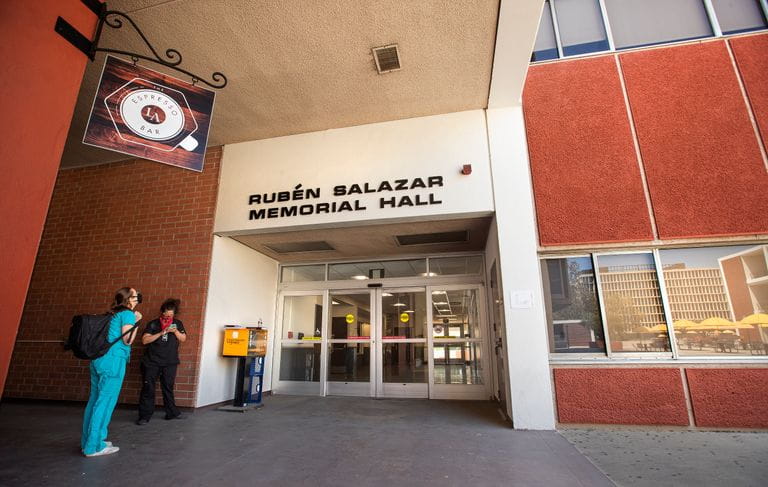
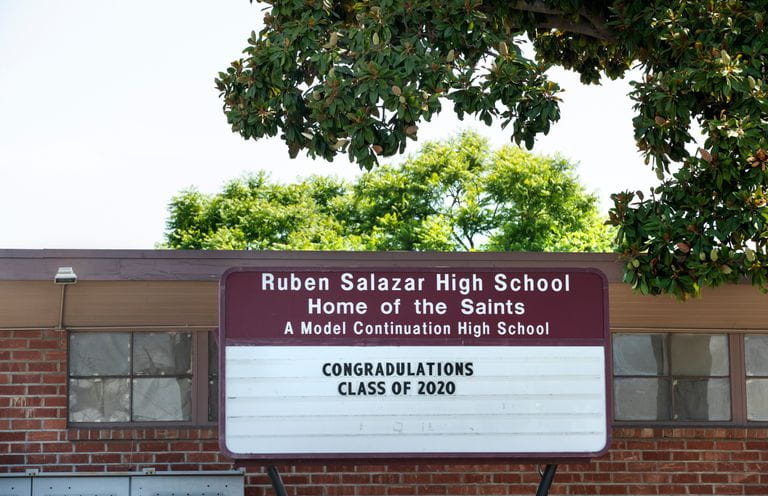
Across the country, paintings, murals and images of Salazar color buildings’ walls and hang in galleries and museums, including the Smithsonian’s National Portrait Gallery and the Natural History Museum of L.A. County. The U.S Postal Service honored him with a commemorative stamp in 2008. And he has inspired documentaries and dissertations and songs. The late Lalo Guerrero, called “the father of Chicano music,” wrote two songs about Salazar: “Homenaje a Ruben Salazar” and “La Tragedia del 29 de Agosto,” which expresses the rage of the Moratorium protesters at the disproportionate deaths of “young Mexican men” in Vietnam and ends with a call for peace so that Salazar won’t have died in vain.
His death even captured the attention of Hunter S. Thompson, whose now-classic new journalism tale, “Strange Rumblings in Aztlan,” brought the story of Salazar and the Chicano movement to a young, largely white nationwide audience. Published in the April 1971 issue of Rolling Stone, it’s also the story that introduced readers to lawyer Oscar “Zeta” Acosta, who was fictionalized as the “Samoan” attorney Dr. Gonzo in Thompson’s book “Fear and Loathing in Las Vegas.”
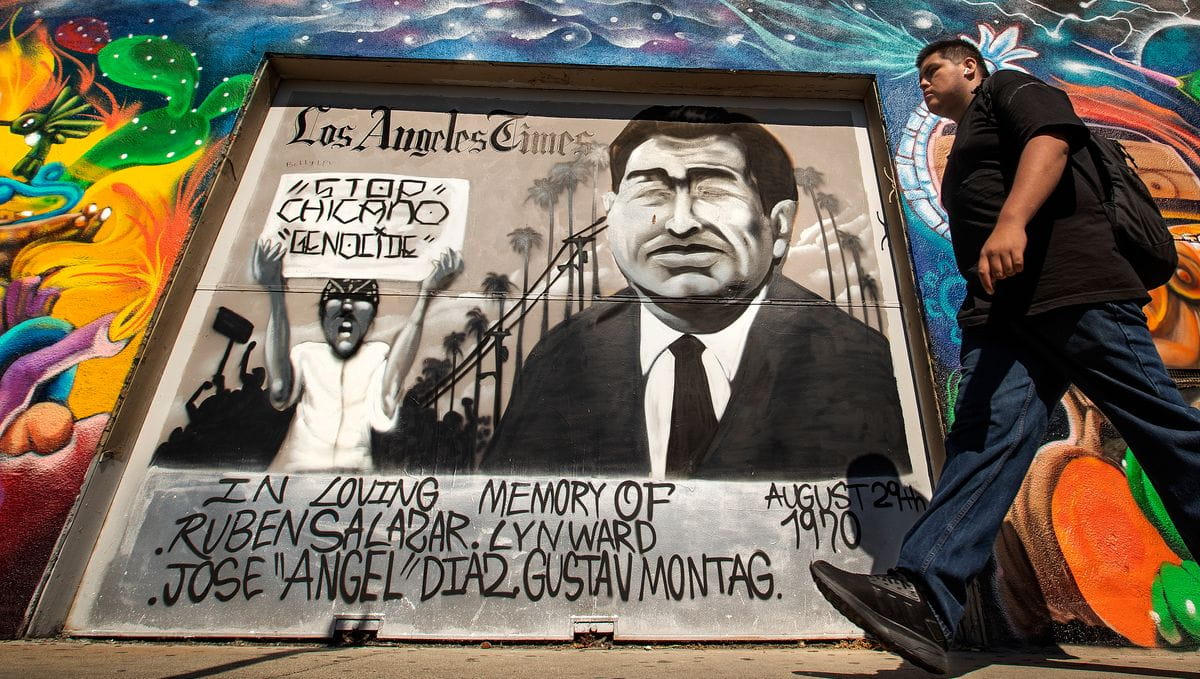
Songwriter and poet Jerry Giddens first learned about Salazar from Thompson’s Rolling Stone story. Influenced by L.A.'s activism at the time, he often wove politics into his music. “It was a very heavy time, and we were playing and writing music to speak to it,” says Giddens, now 67. His song “Remember Ruben Salazar,” which honors the fallen journalist and criticizes the injustices Salazar wrote about, includes the line, “He still walks in East L.A., I thought I saw him yesterday.”
Yet even with songs, murals, paintings, schools, parks or postage stamps created or named in his honor, Salazar remains “more iconic than realized,” says Giddens.
“He was like a Virgen de Guadalupe.”
Man behind the martyr
Lisa Salazar Johnson was 9 when her father was killed. Within days of his death, she realized that the devastation extended beyond her family.
“We’d been at my grandmother’s house, and the day after he was killed, she brought us home. That’s when we saw reporters and cameramen on our front lawn,” she recalls. “Our house was filled with people and it became apparent that this was a big thing.”
The funeral days later further solidified that feeling. “We could just see ... that a lot of people cared about him,” Salazar Johnson, the eldest of Salazar’s three children, says. “Right away it became very apparent that he was a big symbol.”
As one of the few prominent Latino journalists in a mainstream publication at the time, Salazar wrote about systemic issues affecting Mexicans, including racial profiling and police brutality.
“As much as anything he wrote, the circumstances of Salazar’s death made him a martyr to the Chicano movimiento, a role no one would have found more ironic than Salazar himself,” wrote the late Frank del Olmo, the first Latino masthead-level editor at the L.A. Times and a friend of Salazar’s, in a 1995 piece. “For above all, he was a principled journalist who saw his job as reporting the news, not making it.”
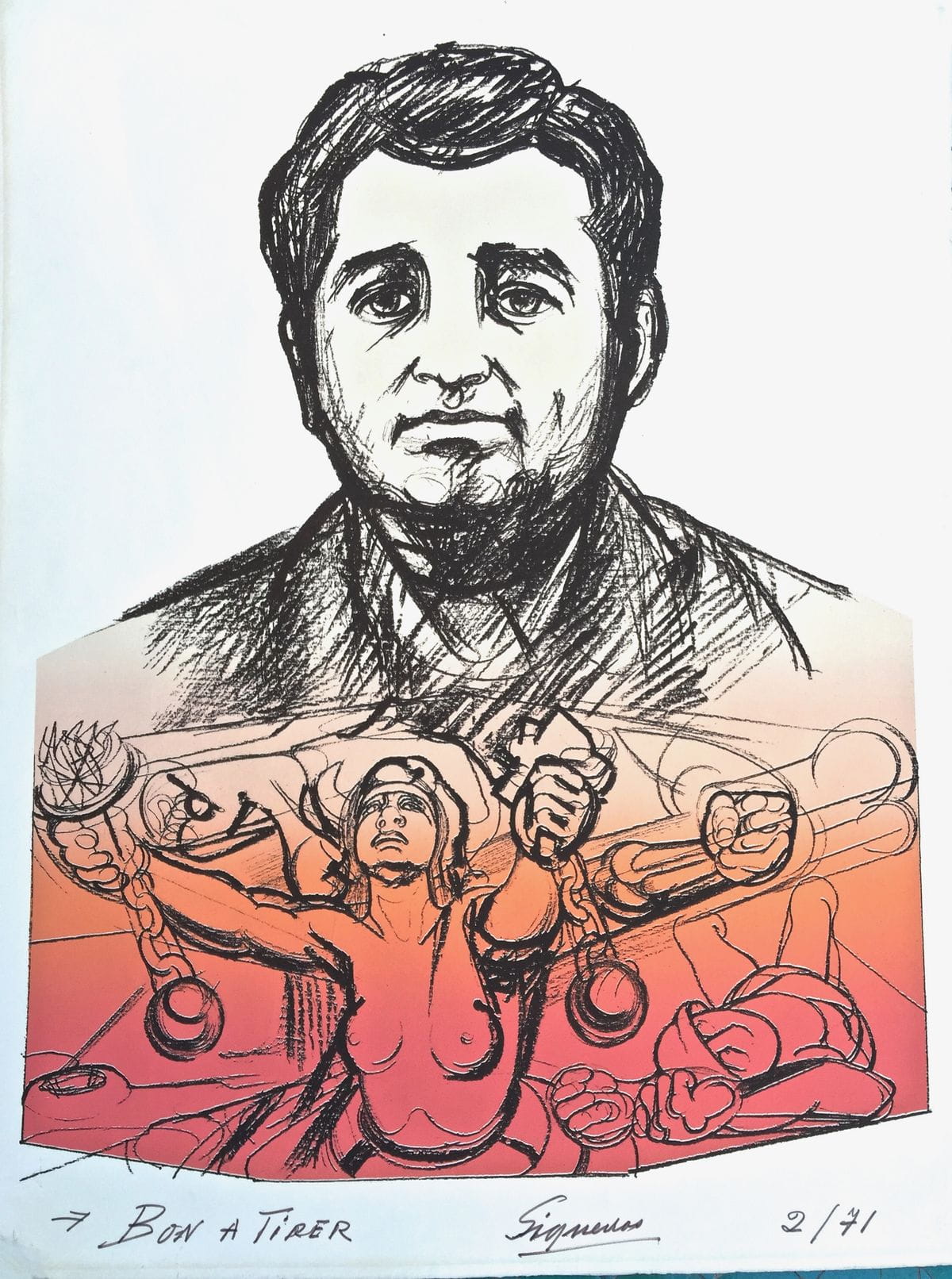
Those who knew him or studied his life believed that the mythology obscured the man.
One example is a lithograph from Mexican painter David Alfaro Siqueiros titled “Heroic Voice,” which depicts Salazar as pious and angelic. A religious symbol. It’s a mythos that unsettled Del Olmo.
“The likeness of Ruben that Siqueiros painted is saintlike, with a distant, long-suffering look to the eyes. It is not the earthly man I knew,” wrote Del Olmo in 1980.
Phillip Rodriguez tried to shatter that mythology with his 2014 documentary “Ruben Salazar: Man in the Middle.”
“The mythology of Salazar, I was tired of it,” says Rodriguez, 61. He sought to make a documentary “the right way ... with facts” in an effort to “try to dig out a real man, not just a symbol of a vanquished mini revolution.”
But that proved to be harder than anticipated. For “the OG Chicano generation ... Ruben had been a symbol of their suffering and broken-heartedness, quite understandably,” Rodriguez says. “He was the only prominent person who got killed … so they used him as their bloody flag.”
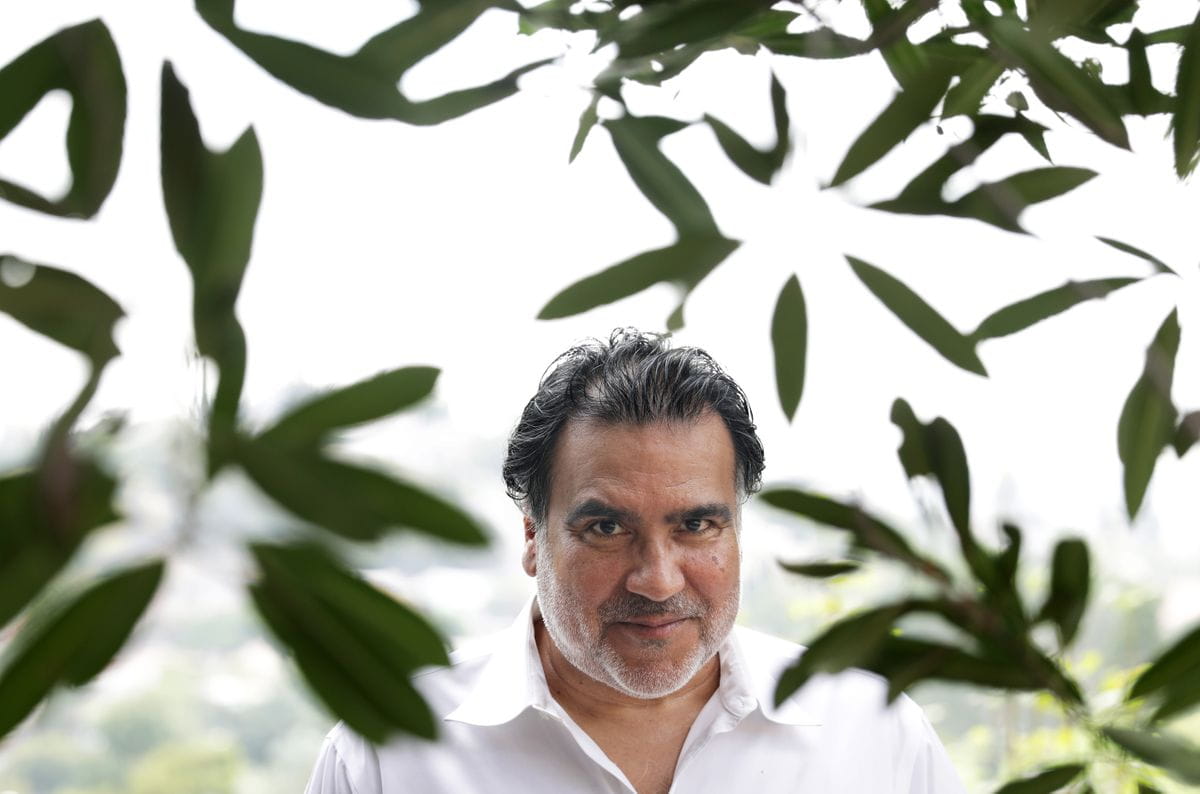
Yet few people knew who Salazar actually was. “He always wanted to be considered a journalist who was interested in this particular community,” says José Luis Valenzuela, artistic director of the Latino Theater Company, which produced “August 29,” a historical fiction play about the day of the Chicano Moratorium. “And I think having been killed by deputies, the community made him into a hero, into a martyr, into an example of what was happening in the community.”
Others were killed in the community, but Salazar “was more visual than anybody … people knew of him much more.”
Salazar always wore a suit and tie, Valenzuela says, which painted an impressive and positive portrait to the poor and working-class Latinos he covered. “For the community, the idea that there is an intellectual human being in their community — which always existed but they had no face because nobody knew who they were — that was very important to them.”
So was the fact that Salazar, who was born in Mexico, was “working inside main institutions and was still progressive.” Salazar showed that it was possible to speak and write about your community in a truthful way within a major outlet.
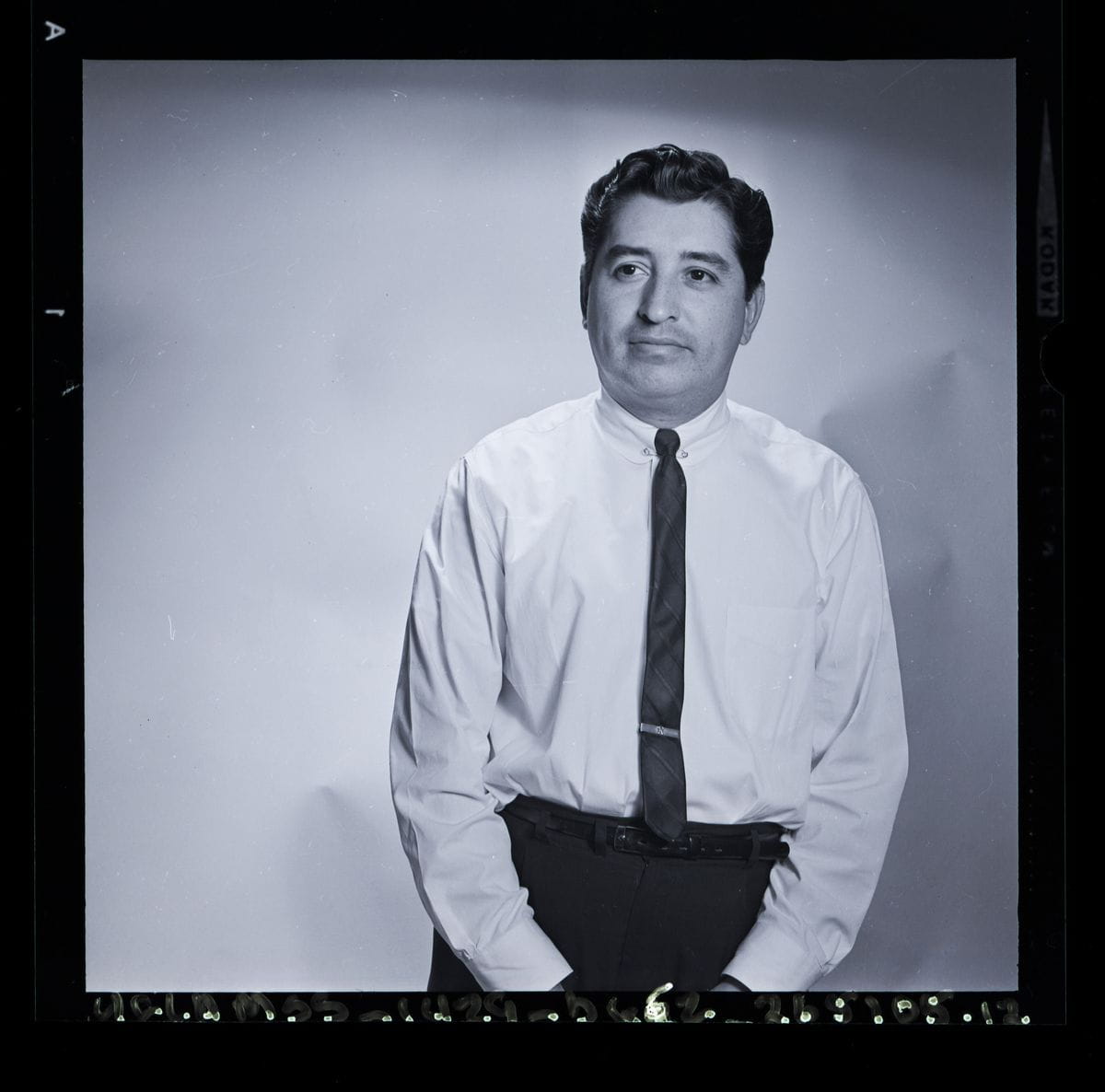
Yvette Cabrera first learned about Ruben Salazar in the halls of the L.A. Times.
Now an environmental justice journalist for Grist, Cabrera was a young reporter in The Times’ Metpro fellowship in 1994 when she began reading Salazar’s columns and stories. But she was disheartened to realize that many of the same issues of unequal treatment that Salazar had written about decades before were still affecting the community. “It inspired me to dig deeper and work harder,” says Cabrera, who became active in the California Chicano News Media Assn. (now CCNMA: Latino Journalists of California), founded in 1972 in part to honor Salazar’s legacy.
Cabrera says that every park, school or postage stamp, anything named in his honor creates more dialogue about him and the work he did.
That includes the annual Ruben Salazar Journalism Awards from CCNMA. It’s one of dozens of cultural markers that reminds people of how far we’ve come and how far we have left to go, says Cabrera, who is CCNMA’s vice president. “Especially now in this moment of reckoning around racial justice issues for Black and brown communities across the country, as we ask ourselves, ‘How do we move forward? Who set the example?’”
The Latino community’s fascination with Salazar also stems from his dual lives: In 1960 he married Sally Robare, who was white and worked in The Times’ classified ads department when they met. They lived in a middle-class neighborhood in Orange County with their three children and liked to host pool and dinner parties. But as a journalist and columnist, he challenged the status quo and was deeply embedded in Latino issues.
“People assumed that our home life was a Spanish-speaking, Mexican, culturally traditional upbringing,” says Salazar Johnson. “I think people just assumed because he was ‘Salazar’ and Mexican American, that we were.”
“He led a completely Anglo life,” his daughter Stephanie Salazar Cook says in “Man in the Middle.” His wife, Sally, who died in 1993, never adapted to Latino culture, according to friends.
“That was just our life. That was the way we were brought up, and that was fine,” says Salazar Johnson. “But how the household might’ve been in the next few years or as we got older? Things could have changed.”
If you love Los Angeles, support our journalism.
The Times is dedicated to covering everything about our city, whether taking a hard look at its past or at what's going on today. Get unlimited digital access. Already a subscriber? Your contribution helps us make projects like this possible. Thank you.
Indeed Salazar’s absence has affected even family members who weren’t yet born at the time of his death. In 2006, Salazar’s grandson Christopher Johnson wrote a letter to then-L.A. County Sheriff Lee Baca for a high school assignment that began, “Dear Sheriff Baca: I have lived my whole life dealing with the pain and anguish your department has caused my family. It was an absurd act that has still gone unanswered for more than 30 years. There seemed to be no reason to kill him other than getting rid of a great voice in the Mexican community.”
What the public did get right about her father, says Salazar Johnson, was his evolution — “this understanding that he was changing himself” the more he dove into issues affecting the Mexican American community.”
Salazar’s ability to straddle two worlds helped him find success as a journalist.
“He was the bridge we had between the Chicano and the Mexican American community and the whiter community,” says Felix Gutierrez, 77, emeritus professor of journalism at USC who came to know Salazar professionally in the late 1960s.
“He was the one person who could communicate with both audiences.”
Hear more from Times journalists. Watch our forum
The Times hosted a virtual forum on the Chicano Moratorium that featured authors of the series, including Daniel Hernandez, Carolina A. Miranda and Robert J. Lopez. Watch recordings via The Times Facebook page, YouTube or Twitter.